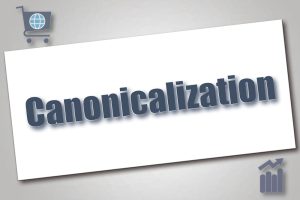Your healthcare website is more than just an online presence—it’s a vital tool for attracting and converting new patients. But are you making it easy for visitors to take the next step? One of the most important elements of a high-converting website is the call-to-action (CTA). Well-designed CTAs can significantly boost your conversion rates, helping you turn passive visitors into active patients.
In this blog post, we’ll dive into the importance of CTA design and placement for healthcare websites, drawing on expert advice from Justin, a specialist in healthcare marketing. Whether you’re running a small solo practice or a larger healthcare organization, optimizing your CTAs can make a world of difference in your patient acquisition efforts.
What is a CTA and Why Does It Matter?
A call-to-action (CTA) is any element on your website that encourages users to take a specific action. Common CTAs for healthcare websites include buttons or links urging visitors to “Book an Appointment,” “Call Now,” “Contact Us,” or “Request a Consultation.”
CTAs are essential because they provide a clear path for potential patients to follow. Without them, visitors may not know how to take the next step in their healthcare journey, resulting in lost opportunities for your practice. According to Justin, strong CTAs help guide users through the website, making it easy for them to engage with your services.
1. Clear and Actionable CTAs
The effectiveness of a CTA largely depends on the clarity of the message. If visitors don’t understand what action they’re supposed to take, they won’t take it. Vague language like “Learn More” or “Submit” doesn’t provide a strong incentive for action.
Solution: Justin recommends using clear and actionable language in your CTAs. The text should directly tell the user what to do and what they can expect. Phrases like “Schedule a Consultation,” “Get Started Today,” or “Book Your Appointment” work well because they provide specific instructions and promise a clear outcome. Be assertive and direct with your wording.
2. CTA Placement: Where Should CTAs Go?
Equally important as the wording of your CTA is its placement on the website. The placement of CTAs can make or break your conversion rates. Visitors often skim through websites quickly, and if your CTA is hard to find, they may leave without taking action.
Solution: Justin suggests placing your primary CTAs in prominent positions, especially in the header of your website. Having a “sticky” header that remains visible as the user scrolls is a highly effective strategy. This ensures that no matter where a visitor is on the page, the CTA is always within reach.
Additionally, place CTAs in strategic spots throughout the content. For example, after detailing a service or treatment, include a CTA inviting users to book a consultation or make an appointment. This way, you’re catching visitors at a moment when they are most likely to take action.
3. Mobile-Friendly CTA Placement
More people are using their mobile phones to search for healthcare providers than ever before. Ensuring your website is mobile-friendly is essential, but you also need to ensure that your CTAs work well on smaller screens.
Solution: For mobile optimization, Justin advises placing CTAs where they are easily accessible with a thumb swipe, usually near the bottom or top of the mobile screen. Make sure buttons are large enough to be clicked easily without zooming in, and avoid crowding the screen with too many elements.
4. Multiple CTAs vs. Single CTA: Which is Best?
There’s a long-standing debate in web design about whether you should offer multiple CTAs or keep it simple with just one. Justin takes a balanced approach, suggesting that while it’s important to offer several options for engagement, you shouldn’t overwhelm your visitors.
Solution: Justin recommends using two or three primary CTAs that cater to different preferences. For example, some users may prefer to call, while others might prefer to book an appointment online or send an email. Providing these options ensures that users can engage with your practice in the way that’s most convenient for them.
However, be cautious about offering too many CTAs, which can cause confusion. Focus on the actions that matter most—like booking an appointment or calling the office—and make sure those stand out. Secondary CTAs, like following you on social media or signing up for a newsletter, should be placed in less prominent positions, such as the footer.
5. CTA Design: Make It Pop
Design plays a significant role in how effective your CTAs are. A CTA that blends into the background or looks like any other part of your site will be ignored. It’s crucial that your CTA buttons stand out and draw the user’s eye.
Solution: Justin emphasizes the importance of color contrast and button design. Your CTA buttons should use a color that contrasts sharply with the rest of your website. For example, if your site’s color scheme is blue and white, a CTA button in a bright orange or green will stand out more and attract attention.
Additionally, your CTA buttons should be large enough to click easily and placed in a visually appealing way. For example, a “Book an Appointment” button that’s front and center in your website header, or a bright “Get Started” button placed near the end of a service description, can increase conversions.
6. Use Urgency and Incentives
Creating a sense of urgency or offering an incentive can increase the likelihood that a visitor will click on your CTA. Phrases like “Limited Availability,” “Book Now to Reserve Your Spot,” or “Free Consultation” can add an extra push to encourage action.
Solution: Justin suggests incorporating urgency or incentives into your CTA copy whenever possible. For instance, adding “Get Seen by a Specialist Within 48 Hours” or “Schedule Your Free Consultation Today” to a CTA can help move potential patients from contemplation to action. This tactic is especially effective for people who are ready to make a decision but need that final nudge.
Conclusion
CTAs are the bridge between a potential patient visiting your website and booking an appointment or consultation. Optimizing your CTA design, placement, and messaging can make a significant impact on your website’s ability to convert visitors into clients. Whether through clear language, strategic placement, or compelling design, well-crafted CTAs guide your visitors toward the next step in their healthcare journey. Take the time to audit your current CTAs, implement these strategies, and watch your conversion rates improve.
Watch the complete interview here:





